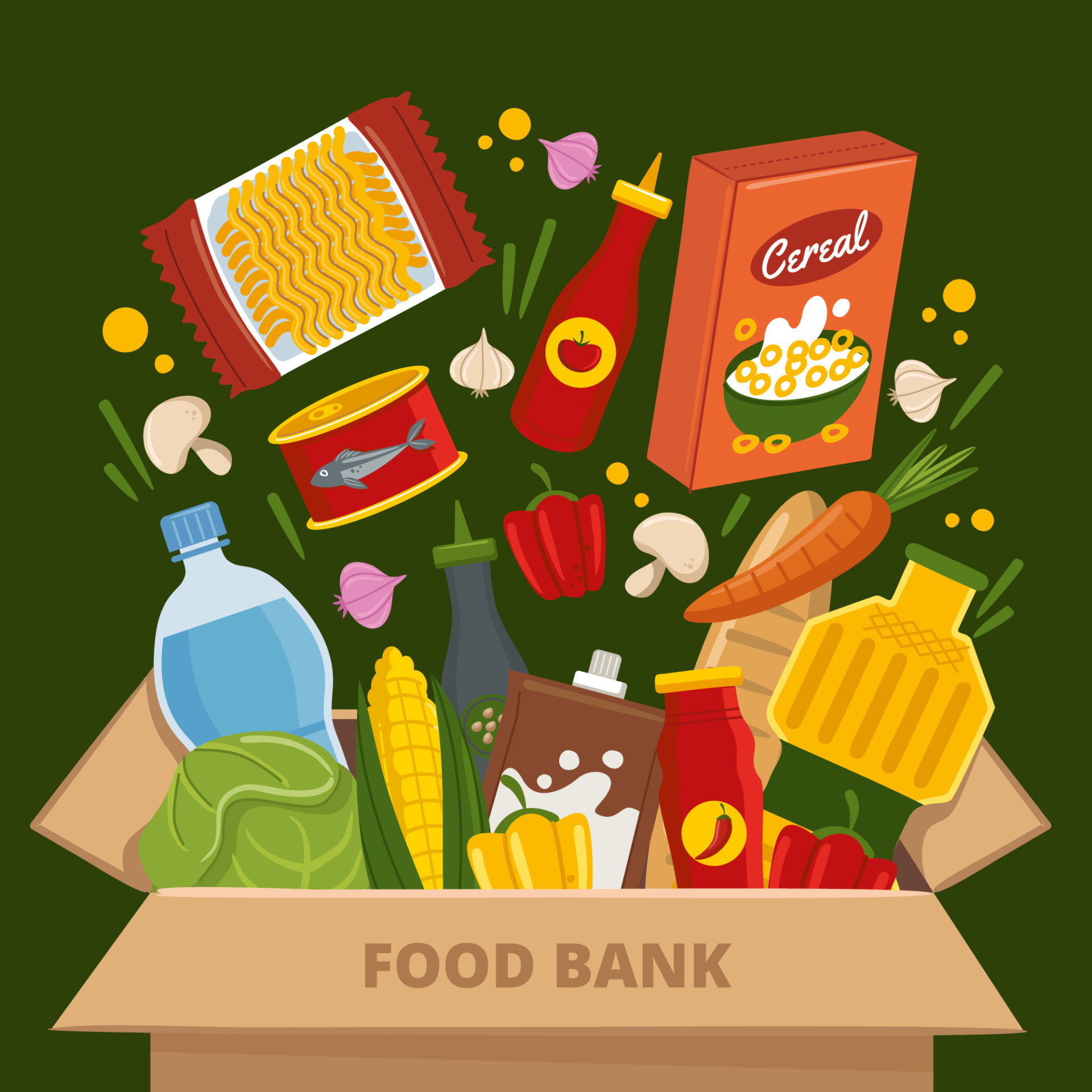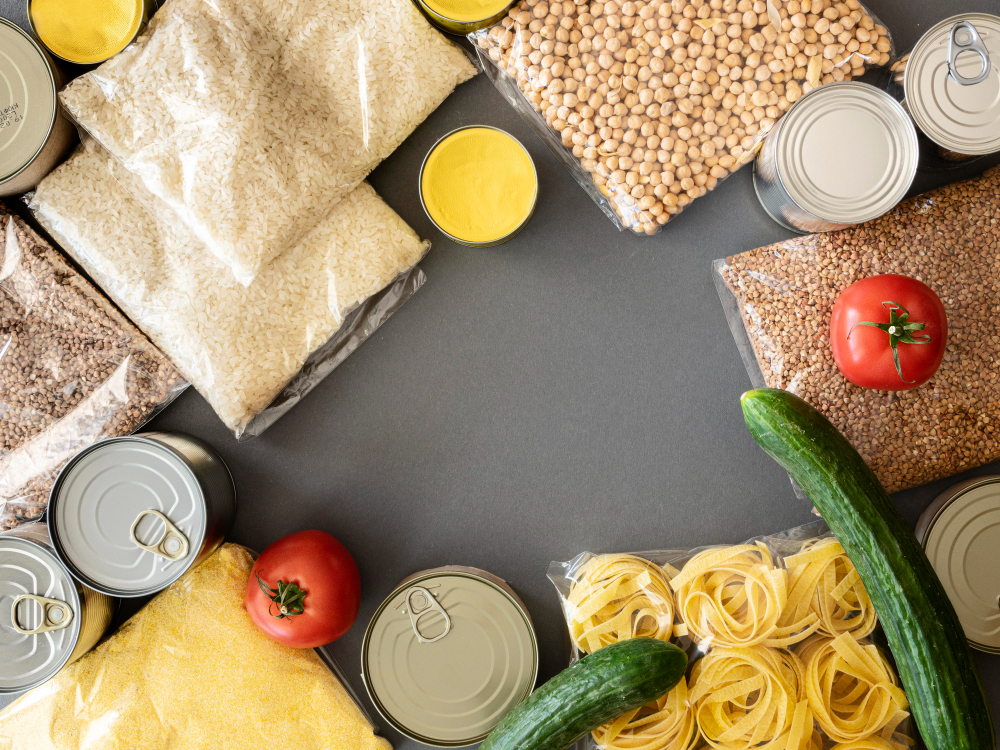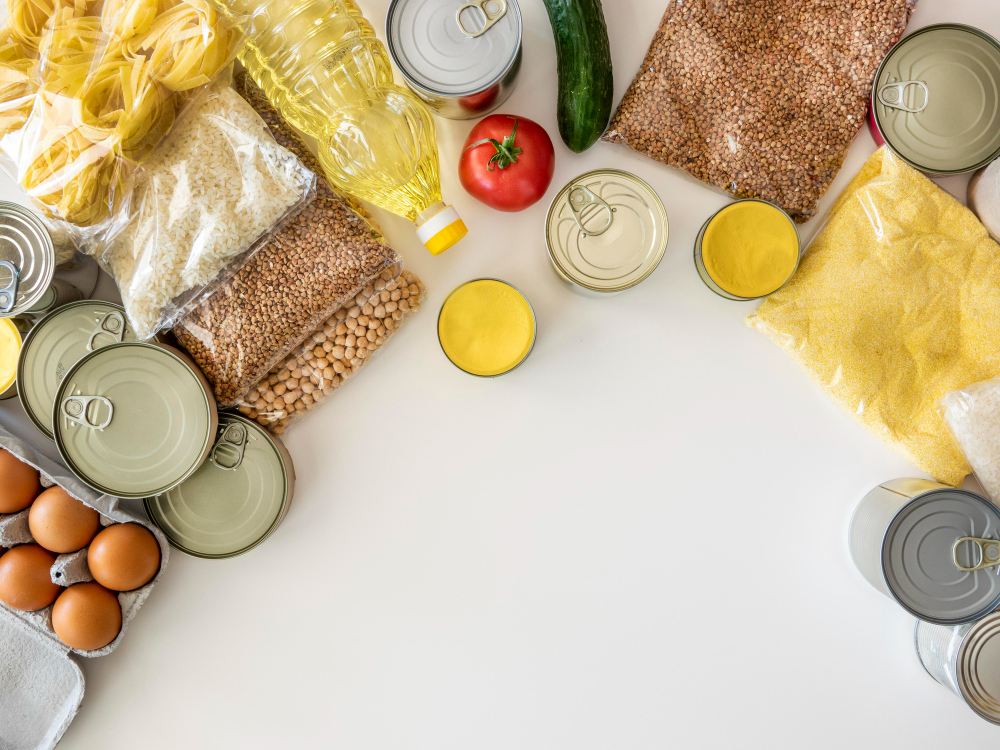Eating well doesn’t have to be hard or take a lot of time. A balanced diet doesn’t have to be hard to make. All you have to do is focus on staple foods that are high in nutrients and easy to add to different meals. You can build your meals around staple foods, which give you the nutrients, flavor, and energy you need to live a good life.
What Exactly Are Staple Foods?
Foods that are eaten often and make up a big part of a diet are called staples. These foods are usually cheap, full of nutrients, and easy to change up, which makes them great for everyday meals. These are the kinds of foods we eat every day to get energy or fill us up.
Different cultures may have different ideas about what a basic food is, but rice, beans, and pasta are all examples. Most of the time, these are cheap foods that don’t make storage harder and can be used in a lot of different meals. Grains, vegetables, and proteins are some more popular examples. What counts as a staple food often varies by culture and area, but they all share the common trait of being dietary essentials.
Why Are Staple Foods Important For Healthy Eating?
Meal planning is made easier by staple foods, which provide you with a reliable starting point. They typically have a healthy balance of fats, carbs, proteins, vitamins, and minerals, making them nutrient-rich foods. Having a consistent collection of staple foods makes it simple to prepare balanced meals without constantly reevaluating your diet.
Top 10 Staple Foods For Healthy Eating

Balance and consistency are key components of a healthy diet. You may design a diet that is tasty and simple to stick to by using basic items that are both adaptable and nourishing. The 10 stable foods listed below serve as the cornerstone of a nutritious diet because they are easy to prepare and incorporate into a variety of meals while offering essential nutrients.
1. Whole Grains
Powerhouses of nutrients are whole grains like quinoa, brown rice, and oats. Whole grains are rich in fiber, B vitamins, iron, magnesium, and antioxidants since they still include their bran and germ, unlike refined grains. The high fiber content promotes heart health, facilitates digestion, and helps keep blood sugar levels steady. Because they have fiber, they keep you from getting hungry too quickly and are great for digestion.Whole grains can be used as a side dish for proteins or as the foundation for salads and grain bowls. They are very adaptable. Oatmeal is a healthy and quick breakfast choice, and quinoa works well in stir fries or salads.
2. Legumes
One of the healthiest things you can eat is legumes. Plant-based proteins called legumes, which include beans, lentils, and chickpeas, provide a blend of fiber, protein, and important vitamins like iron and folate. They are a great option for heart health because they are cholesterol-free and low in fat. In addition to being the star of substantial stews, soups, and salads, legumes can also be mashed and added to curries for extra protein or blended into spreads like hummus. They’re also inexpensive and simple to store, which makes them a great basic for anyone trying to eat well without going over budget.
3. Leafy Greens
Some of the healthiest things you can eat are leafy greens like spinach, kale, and Swiss chard. These greens, which are high in iron, calcium, fiber, and vitamins A, C, and K, support healthy bones, strong immune systems, and general wellbeing. You can add leafy greens to practically any dish. Blend them into smoothies, toss them into salads, or quickly sauté them with garlic as a side dish. They are the perfect food for anyone trying to maintain or reduce weight while still getting enough nutrition because they are high in nutrients and low in calories.
4. Nuts and Seeds
Nuts and seeds that are high in fiber, protein, and healthy fats include almonds, walnuts, chia seeds, and flaxseeds. Essential omega-3 fatty acids, which promote heart and brain function, are found in these foods. They’re also a great source of antioxidants and vital minerals like zinc and magnesium. Nuts and seeds can be eaten as a quick snack or added to cereals, yogurt, salads, and baked products. They are a dependable staple for regular consumption because they are long-lasting and easy to store.
5. Lean Protein Sources
Protein is important for maintaining muscle mass, building and repairing tissues, and keeping the metabolism going. Plant-based proteins like tofu and tempeh, as well as lean protein sources like chicken, turkey, and fish, provide high-quality protein without too many saturated fats. For the week, you can have ready-to-use lean proteins for salads, wraps, and main meals by cooking a lot of chicken breasts or tofu at once. Lean proteins can be used in many different ways, making it easy to make healthy meals that keep you full and energetic.

6. Fresh Fruits
Fruits high in vitamins, antioxidants, and fiber, such as citrus fruits, bananas, berries, and apples, are vital for a balanced diet. They are naturally sweet and nutrient-rich, supporting energy levels, digestion, and immune system health. Add fresh fruits to smoothies, to breakfast bowls, or just eat them as a snack to incorporate them into your diet. You can switch between various fruits to enjoy different tastes and health benefits all through the year because there are so many to choose from.
7. Root Vegetables
Root veggies, such as potatoes, sweet potatoes, carrots, and beets, are very healthy because they are high in fiber, complex carbohydrates, and vitamins A and C. These veggies provide gradual energy release, allowing you to feel full and content for extended periods of time. Root vegetables are a versatile addition to meals when they are roasted, boiled, or mashed. While carrots can be eaten raw, roasted, or mashed into soups, sweet potatoes are suitable for both savory and sweet recipes.
8. Healthy Oils
Nutritious oils including avocado, coconut, and olive are necessary for food preparation and frying. The high level of monounsaturated and polyunsaturated fats in these oils is good for the heart. Mediterranean diets often include olive oil, in particular, because of its well-known anti-inflammatory qualities. Use these oils to flavor food, sauté vegetables, and drizzle over salads. They also include antioxidants and fat-soluble vitamins, which are good for your general health.
9. Dairy Or Dairy Alternatives
Good sources of calcium, vitamin D, and protein include dairy products like milk, yogurt, and cheese, as well as plant-based substitutes like almond milk, soy milk, and coconut yogurt. These nutrients play a critical role in overall growth, muscle function, and bone health. You can utilize traditional dairy or plant-based alternatives in a variety of ways, such as putting cheese in sandwiches and salads, blending milk into your morning smoothie or coffee, or eating yogurt with fruit and granola.
10. Eggs
One of the most adaptable and nutrient-dense staple meals out there is eggs. They give you good protein, vitamin D, and choline, all of which are important for brain health. Eggs are a versatile food that can be easily included into any meal, including breakfast, lunch, and supper. They can be cooked in a variety of ways, such as baked, poached, scrambled, or boiled. For an extra protein boost, top your preferred salad or grain bowl with a poached egg, frittata, or omelet.
How To Build A Healthy Meal Plan With These Staples
It’s easy to prepare balanced meals if you concentrate on these basic ingredients. Begin with a base of whole grains or legumes, then top with a lean protein, a variety of vegetables, and healthy fats like nuts or olive oil. You could have oatmeal with fresh fruit and almonds for breakfast. A quinoa salad with lush greens, chickpeas, and a nutritious dressing can be served for lunch. Think about having grilled chicken or another lean protein for dinner along with some roasted root vegetables and a side salad.
By using these fundamentals for meal prep, you may save time and maintain consistency in your efforts to eat healthily. You can easily put together wholesome meals throughout the week by prepping grains, proteins, and veggies in advance. This also lessens the temptation to reach for less healthful convenience food.

Storing And Preserving Staple Foods For Freshness
Appropriate storage is essential to extending the shelf life and nutritious content of your staple foods. Legumes and grains should be stored in sealed containers to keep out moisture and pests. To preserve leafy greens crisp and fresh, store them in the refrigerator, preferably wrapped in a paper towel or moist cloth. If you have produce that could go bad soon, freeze it in pieces that you can defrost out and use at a later time. To keep the oils in nuts from going rancid, store nuts and seeds in a cool, dark place, preferably in the refrigerator.
How To Build A Healthy Meal Plan With These Staples
To make the most of these staple foods, plan meals that are balanced in macronutrients (carbohydrates, proteins, and fats). Begin with a base of whole grains or legumes, then include a lean protein, a plenty of vegetables, and healthy fats. Using these items for meal prep can help you eat healthier and save time.
Storing And Preserving Staple Foods For Freshness
The secret to preserving the freshness of your staplel foods is proper storage. To keep grains and legumes moisture-free, store them in airtight containers. To keep leafy greens from withering, store them in the refrigerator covered with a moist cloth. Think about freezing parts of fruits and veggies so you can utilize them later.

Conclusion
Dietary staples are the foundation of a balanced diet. You can make eating healthily easier as well as pleasurable by concentrating on these nutrient-dense essentials. Not only do these fundamentals improve your health, but they also make it easier to make simple dietary choices every day.
FAQs
- What staple foods work best in a balanced diet?
Whole grains, legumes, leafy veggies, lean proteins, nuts, seeds, and fresh fruits are some of the best staple foods.
- How can I start incorporating these staples into my diet?
Begin by gradually incorporating these healthier staple into your meals in place of less nutrient-dense ones.
- Are staple foods expensive?
Purchasing staple foods in bulk can make them more cost-effective. Legumes and grains are examples of inexpensive, versatile foods.
- Can these staple foods fit into a vegetarian or vegan diet?
Indeed! For vegetarian and vegan diets, staples like legumes, leafy greens, nuts, seeds, and plant-based dairy substitutes are ideal.
- How can I keep these staple foods fresher for longer?
Freshness must be preserved through proper storage, such as using airtight receptacles for grains and moisture management for greens.



